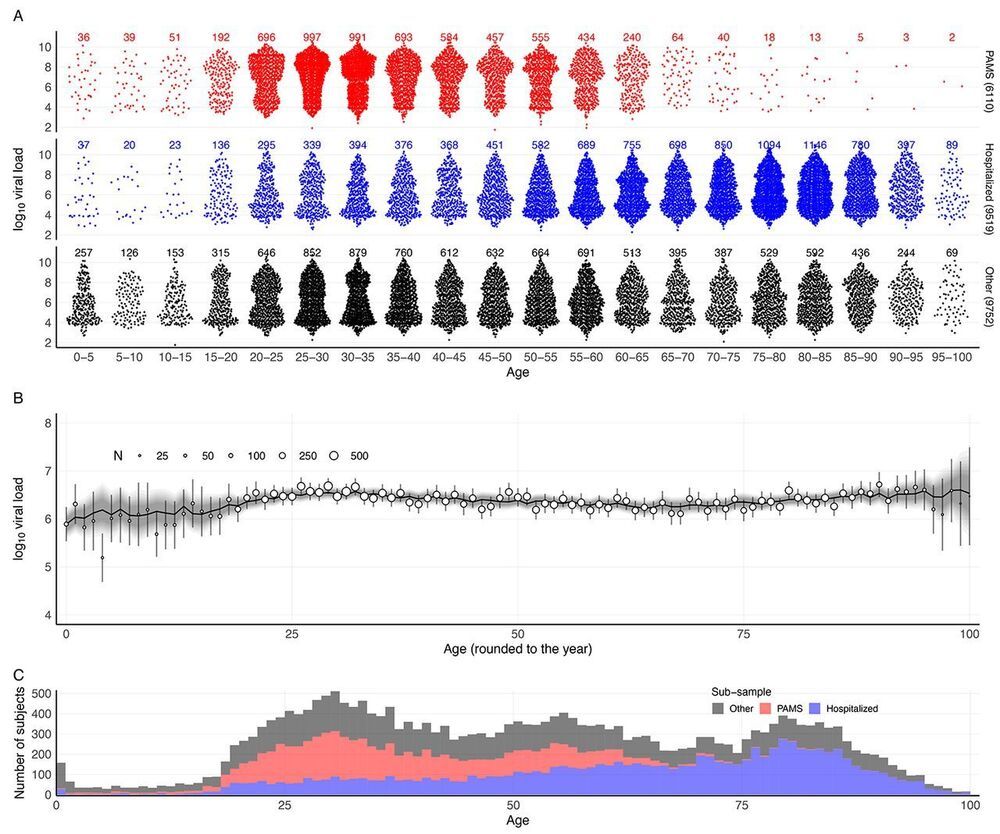Of 25000+ people who tested positive for #COVID19 in Germany, 8% had very high viral loads; about a third of these had little to no symptoms. The results suggest asymptomatic people can be expected to be as infectious as hospitalized patients.
Read more from Science:
Two elementary parameters for quantifying viral infection and shedding are viral load and whether samples yield a replicating virus isolate in cell culture. We examined 25381 German SARS-CoV-2 cases, including 6110 from test centres attended by pre-symptomatic, asymptomatic, and mildly-symptomatic (PAMS) subjects, 9519 who were hospitalised, and 1533 B.1.1.7 lineage infections. The youngest had mean log10 viral load 0.5 (or less) lower than older subjects and an estimated ~78% of the peak cell culture replication probability, due in part to smaller swab sizes and unlikely to be clinically relevant. Viral loads above 109 copies per swab were found in 8% of subjects, one-third of whom were PAMS, with mean age 37.6. We estimate 4.3 days from onset of shedding to peak viral load (8.1) and cell culture isolation probability (0.75). B.1.1.7 subjects had mean log10 viral load 1.05 higher than non-B.1.1.7, with estimated cell culture replication probability 2.6 times higher.
Respiratory disease transmission is highly context dependent and difficult to quantify or predict at the individual level. This is especially the case when transmission from pre-symptomatic, asymptomatic, and mildly-symptomatic (PAMS) subjects is frequent, as with SARS-CoV-2 (1–8). Transmission is therefore typically inferred from population-level information and summarized as a single overall average, known as the basic reproductive number, R0. While R0 is an essential and critical parameter for understanding and managing population-level disease dynamics, it is a resultant, downstream characterisation of transmission. With regard to SARS-CoV-2, many finer-grained upstream questions regarding infectiousness remain unresolved or unaddressed. Three categories of uncertainty are 1) differences in infectiousness among individuals or groups such as PAMS subjects, according to age, gender, vaccination status, etc.
